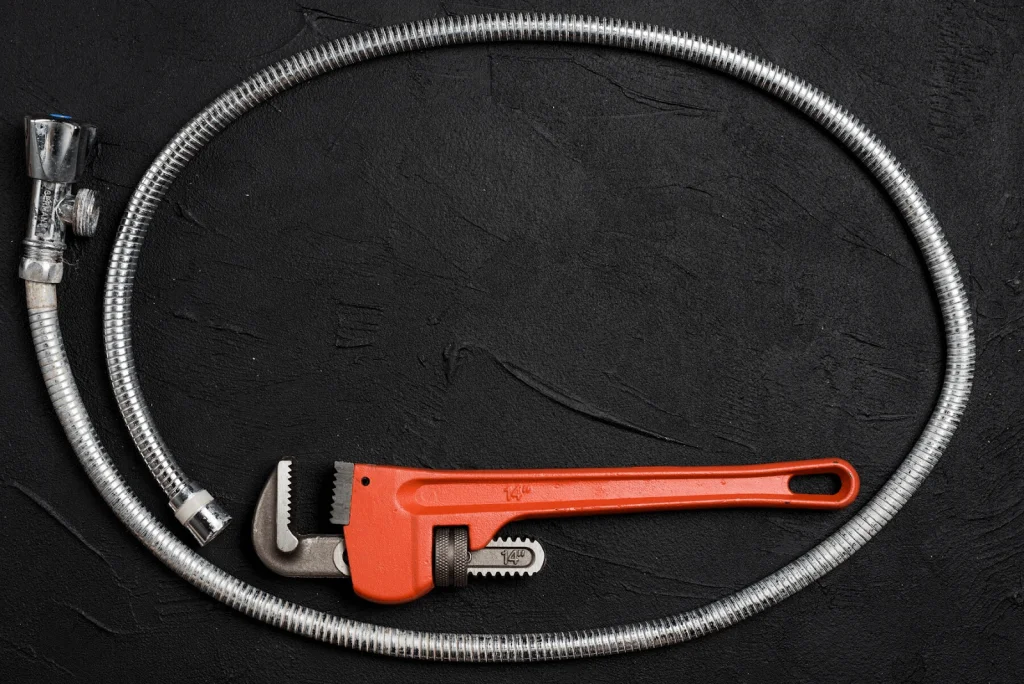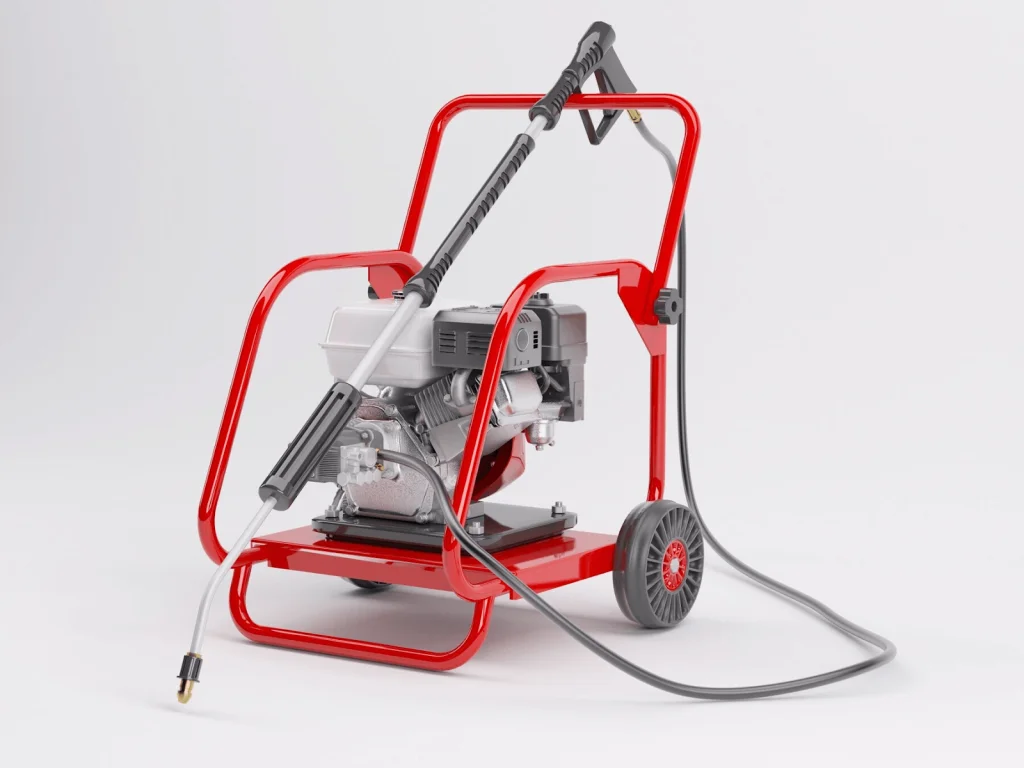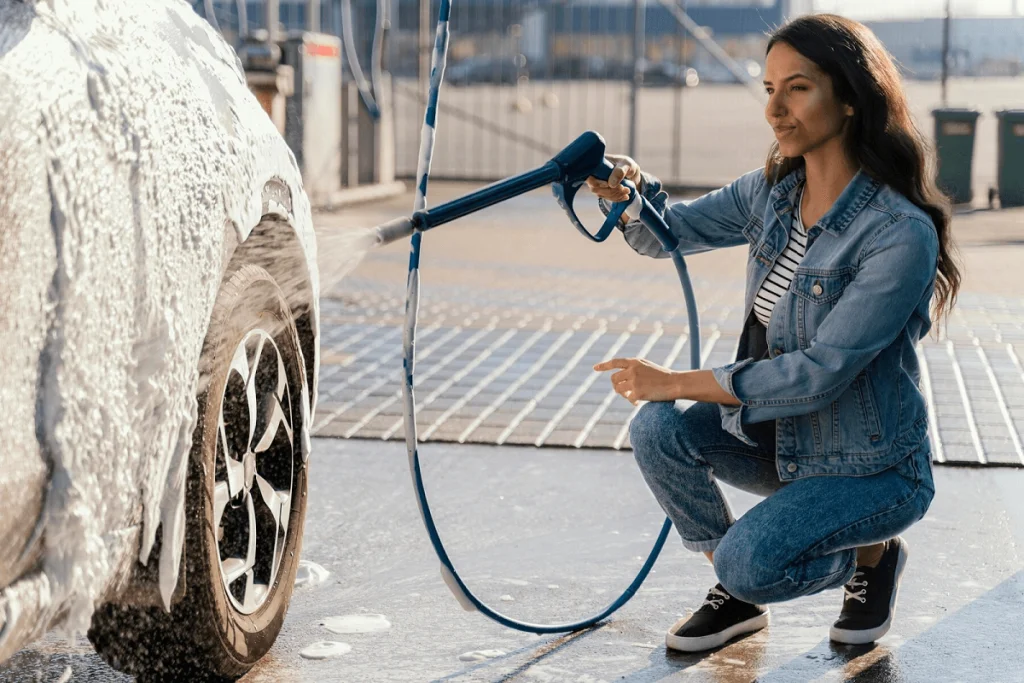Pressure washers are big machines that squirt water out very fast. The water comes out so strong and quick that it can make any dirty thing very clean. A pressure washer has a long hose to suck up water. It has a motor that turns on a pump. The pump squeezes the water and forces it out through a tiny hole at the end.
So how do pressure washers work? The highly pressurized water smashes into the dirt and grime on a surface. The water shoots out very fast and strong. This removes all the dirty stuff easily. A pressure washer cleans like a super strong hose. It is much faster than scrubbing by hand. Pressure washing takes only minutes not hours of work. The strong water does all the cleaning for us.
You can clean decks, driveways, cars, and home exteriors. Just point and spray at the dirty area. The water pressure removes the dirt for you. Pressure washer from reputed brands like VEVOR can come handy for everyday use.
Table of contents
Core Components of a Pressure Washer

At first glance, pressure washers may seem to be incredibly complex machines, but they are fundamentally similar. Let me break down the core components that make these cleaning machines possible.
Power Source
Every pressure washer contains a power source. This provides the energy to get the whole system running. Smaller pressure washers meant for household usage usually run on ordinary electricity and may be plugged into a conventional socket.
Heavy-duty professional models, on the other hand, frequently use gas-powered motors that deliver additional power.
Water Pump
The water pump is like the pressure washer’s beating heart. It is in charge of taking in the water supply and putting up extremely high pressure. Different models use different pumping mechanisms, but they all serve this critical pressure-creating role.
High-Pressure Hose
The pump makes a lot of water pressure. You need a very strong hose to hold and send the water. The high-pressure tube connects the pump and spray wand. It lets the big force out in a flow you can control.
Cleaning Attachments
At the end, the high-pressure hose has a lot of nozzles and tools. Some nozzles are made for certain jobs. Others are wands that can be used for different cleaning tasks. These attachments focus and optimize the spray pattern for peak cleaning performance on various surfaces.
How Do Pressure Washers Create Such Powerful Spray?
So we know the main components, but how exactly do pressure washers take normal water and turn it into that intense, super-powered cleaning spray? The secret lies in two key elements – the water pump and the nozzle.
Explanation of Water Pumps and Nozzles
So the pump makes the pressure incredibly high, and the nozzle takes that pressure and turns it into the powerful jet spray we’re all so familiar with and fond of. Imagine using a regular hose without covering the end of the thumb to restrict the water from spraying outward. The pump contains a tiny reciprocating piston that quickly moves back and forth.
As it retracts, water might enter a small chamber. When the piston travels forward, it pushes that tiny volume of water through a much smaller aperture, causing the pressure to rise dramatically.
The highly pressurized water is then directed through the strengthened, high-pressure hose we discussed before. Finally, the hose reaches the nozzle or spray tip. These nozzles have very narrow holes – many are measured in thousandths of an inch wide. The pump’s massive pressure, pushing the water via this small nozzle aperture, forces the stream to accelerate as it exits, to a velocity so fast that the narrower the aperture, the faster the exit speed and the greater the impact of the spray.
Role of Electric Motors in VEVOR Models
In VEVOR’s lineup of electric pressure washers designed for residential use, the pumps are powered by compact yet mighty electric motors. These motors effortlessly spin the pump mechanisms to generate pressures up to 3800 PSI.
Electric vs. Gas Pressure Washers

When it is time to get a machine for washing things with high pressure, you must pick if you want the one that runs on electricity or gas. Electricity ones use power from a plug. Gas ones run on gas like what cars use. Both have different features for different jobs.
For most homes and regular users, electric washers like VEVOR’s are a good pick. They have enough power for common cleaning at home. You can easily clean your walls, floors, cars, and more.
Electric models are simple to use and need little upkeep. There is no need to worry about pulling starting cables, changing oil, or keeping gas on hand. Simply plug them into a normal socket and you are ready to spray.
Electric vehicles are also more small, portable, and quieter than their petrol equivalents. This makes them ideal for household situations.
For heavy-duty industrial or commercial cleaning applications that demand extreme pressure and continuous run times, gas-powered washers are usually preferred. But for basic homeowner needs, the electric VEVOR units offer outstanding cleaning power in a simple, affordable, and eco-friendly package.
Step-by-Step: How a Pressure Washer Works

Connect Water Supply
The first step in utilizing a pressure washer is connecting it to a water supply. Most electric machines, such as the VEVOR types, require only that one end of a garden hose be connected to the washer’s inlet port. The other end can be linked to a freshwater source, such as an outdoor tap or spigot.
Plug In and Power Up
Next, ensure that the pressure washer is plugged into a grounded electrical socket, using the appropriate extension cord if necessary. Most home units use the typical 120V household current. Once everything is safely connected, flip the switch or press the button to turn on the electric motor.
Allow Pump to Build Pressure
When the motor starts, it moves the inside pump parts. Do not worry if water does not come out fast. The pump may take some time to come out in full pressure. It can take 30 seconds or 1 minute to make full pressure.
Initiate Spray and Begin Cleaning
Once the pump has had a chance to thoroughly pressurize the system, you can truly put that cleaning power to use! Depending on the model, you may be able to squeeze and release the high-pressure spray using a trigger gun. Alternatively, some units have a straightforward valve that you can simply twist to initiate water flow.
From there, it’s as simple as directing the focused stream of water toward your intended cleaning surface using the appropriate nozzle. The incredible pressure will effortlessly blast away dirt, grime, loose paint, and more from brick, concrete, siding, vehicles, and all sorts of other surfaces.
Sure, you should keep the powerful spray far away from the surface to prevent any harm. But in general, the pressure washer does tough cleaning jobs very well.
Safety and Maintenance Tips
Pressure washers are helpful tools. But, they must be handled with care. If not, the strong water blast can cause harm.
Wear safety glasses, sturdy shoes, and clothes that cover well. Never point the spray wand towards yourself, pets, or onlookers. The powerful stream can inflict serious lacerations or inject water into the skin.
Before disconnecting hoses or parts, release pressure from the system. Simply squeeze the trigger of the spray gun to do this.
Also, do basic maintenance to keep the system working well for a long time. This includes things like:
- Flushing the system with clean water after each use
- Using manufacturer-recommended pump oil and greasing points
- Periodically degreasing and cleaning the pump assembly
- Inspecting hoses, fittings, and seals for any potential leaks
- Properly storing the unit, hoses, and accessories when not in use
Following the manufacturer’s guidelines for operation and upkeep will ensure you get many years of reliable cleaning power from your pressure washer investment.
Versatile Cleaning Power of Electric Pressure Washers
One of the best things about having an electric pressure washer like the portable VEVOR models is just how incredibly versatile they are. With a simple exchange of the various nozzle attachments, these cleaning workhorses can be customized to tackle a wide range of difficult tasks in and around your house.
An electric power washer, equipped with a fan-tip nozzle, cleans big surfaces quickly, such as concrete patios, driveways, sidewalks and more. The strong spray quickly cleans tough grime, dirt, moss, and stains that regular cleaning can’t handle.
When you use a spinning turbo nozzle, you’ll get a great tool for washing your cars, trucks, RVs, and other vehicles thoroughly. The focused stream can wash away hard road dirt, tree sap, and pollution.
A power washer is an amazing tool to wash many things outside. It can clean the house walls, decks, fences, and outdoor furniture. With the right nozzle, you can easily remove rust, fading, and dirt. After using a power washer, surfaces look brand new!
And the uses don’t stop there! A pressure washer can also be extremely useful for specific indoor cleaning activities. The high-pressure rinse action quickly cleans oily garage floors, driveways, and work spaces. You can even use models like the VEVOR electric units for more delicate applications like cleaning tiles, windows, screens, and other household surfaces when using a lower pressure setting.
A power washer is a very useful tool for cleaning tasks around the house. You can switch the nozzle to change the water pressure and spray pattern. This makes all cleaning jobs simpler and quicker.
Why Choose VEVOR? A Comparative Look

There are many kinds of machines that use high water pressure. These machines can clean things. It can be hard to pick the right machine. It depends on the cleaning job. And it also depends on how much money/budget you have. But VEVOR’s electric power washers are great, especially for homeowners.
Offering maximum pressures up to an impressive 3800 PSI, the VEVOR units provide exceptional cleaning power while still maintaining an affordable price point. Their portable, lightweight designs make them easy to move around and store.
A patented axial pump helps ensure reliable performance and a long service life. Anti-airlock technology prevents issues like frustrating inlet pipe dry outs. And with features like automatic total stop systems and thermal protection, the washers have enhanced safety and durability.
VEVOR pairs this excellence in engineering with top-notch customer support. So whether you need guidance on operation, maintenance, or choosing the right accessories, you can count on attentive service.
For anyone looking for a high-quality yet affordable pressure washing option for their home, the innovative VEVOR series is well worth considering.
Conclusion
There is no doubting the remarkable cleaning power and efficiency that pressure washers offer. With its ability to generate incredibly high water pressures and targeted spray forces, even the most difficult cleaning tasks become nearly trivial.
We’ve explored the core components that make these devices possible, from the powerful pump mechanisms to the precise nozzle engineering. We’ve seen how electric models like those from VEVOR can harness modest household currents to achieve pressures up to 3800 PSI – more than enough muscle for any homeowner’s cleaning needs.
A well-designed electric pressure washer is a versatile tool that every homeowner should have in their arsenal, from weekly duties like washing their car or clearing debris off patios to heavy-duty stripping and restoration work on siding, fences, and more.
If you want to save time, effort, and frustration while cleaning, it’s time to try an electric pressure washer like the VEVOR series, which offers unrivaled performance and simplicity. Your surfaces will thank you!





